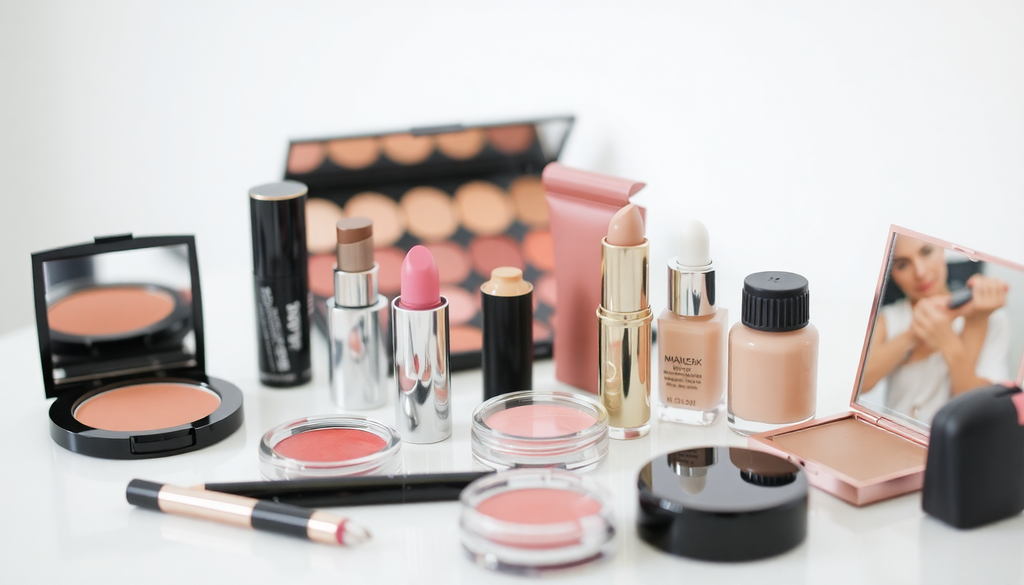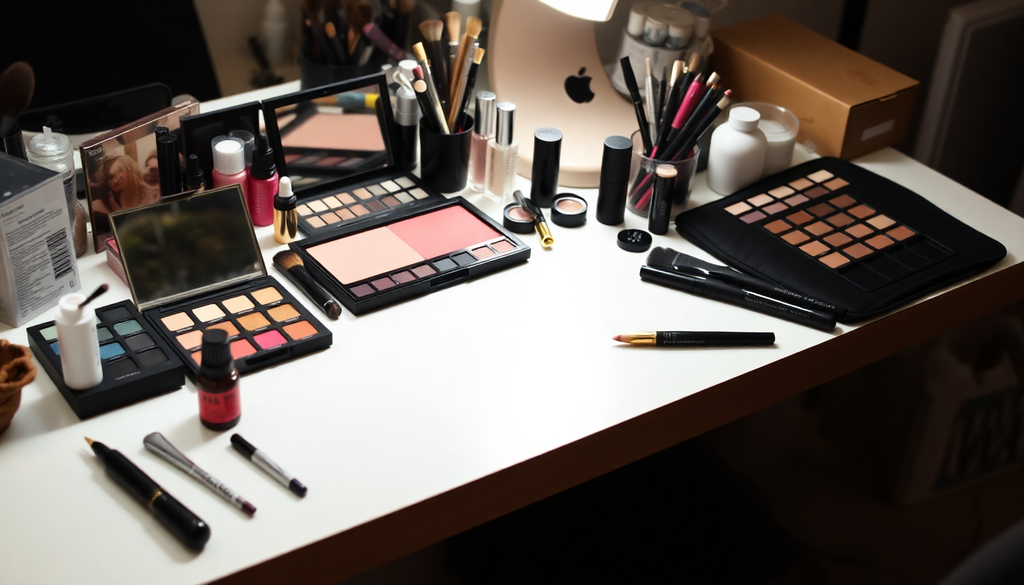
2025 Guide to Launching Your Private Label Makeup Brand: Essential Steps for Magnetic Lashes, Custom Eyeshadow Palettes, and Effective Marketing Strategies
Introduction
As the beauty industry continues to flourish, launching a private label makeup brand in 2025 presents an exciting opportunity for aspiring entrepreneurs. With the right approach, you can create a brand that resonates with customers and stands out in a crowded market. This comprehensive guide will walk you through the essential steps needed to establish a successful private label makeup brand, focusing specifically on magnetic lashes, custom eyeshadow palettes, and effective marketing strategies.
1. Understanding Private Label Makeup
Private labeling involves partnering with a manufacturer to produce products that are sold under your own brand name. This model has gained popularity due to several advantages:
- Cost Efficiency: Private labeling significantly reduces upfront costs since you don’t need to invest in product development from scratch.
- Expertise: You gain access to manufacturers with expertise in formulation, production, and compliance, ensuring high-quality products.
- Brand Customization: You have the freedom to create unique products that reflect your brand’s identity and meet consumer demands.
2. Choosing Your Niche: Magnetic Lashes and Custom Eyeshadow Palettes
Focusing on specific product categories can help you build a strong brand identity. Here’s how to strategically choose your niche:
- Market Research: Analyze current beauty trends to understand the demand for magnetic lashes and custom eyeshadow palettes. Utilize tools like Google Trends and social media analytics to gauge interest.
- Target Audience: Identify your target demographic. Are they teenagers, makeup enthusiasts, or professionals? Tailor your products and marketing strategies to fit their preferences.
- Competitor Analysis: Study your competitors to identify gaps in the market. What unique features can you offer that they don’t?
3. Finding the Right Manufacturer
The choice of manufacturer can make or break your brand. Here are some steps to find the perfect partner:
- Research Potential Manufacturers: Look for manufacturers specializing in private label cosmetics. Platforms like Alibaba, ThomasNet, and Maker’s Row can help you find reputable suppliers.
- Request Samples: Before making a decision, ask for product samples to evaluate the quality of their work. Pay attention to the formulation, packaging, and overall presentation.
- Verify Certifications: Ensure that the manufacturer holds necessary certifications such as ISO, GMP (Good Manufacturing Practices), and cruelty-free certifications. This ensures compliance with safety and quality standards.
- Negotiate Terms: Discuss pricing, minimum order quantities, lead times, and shipping arrangements to ensure that the partnership is mutually beneficial.
4. Compliance with Cosmetics Regulations
Launching a makeup brand requires adherence to various regulations. Here are key compliance considerations:
- Labeling Requirements: Familiarize yourself with cosmetic labeling laws in your target market. For example, the EU requires specific ingredient listings, while the FDA in the USA has its own set of guidelines.
- Product Safety Assessments: Conduct safety assessments and ensure your products undergo stability testing to confirm they are safe for consumer use.
- Import Policies: If you are sourcing products internationally, be aware of import tariffs, customs regulations, and any necessary documentation to avoid legal issues.
- Intellectual Property: Consider trademarking your brand name and logo to protect your intellectual property and prevent others from using your brand identity.
5. Creating Your Online Store
In the digital age, a strong online presence is essential for reaching your audience. Here are the steps to create your online store:
- Select an E-commerce Platform: Choose a platform that suits your needs, such as Shopify, WooCommerce, or BigCommerce. These platforms offer user-friendly interfaces and various features to help you manage your online store.
- Design Your Website: Invest in a professional design that reflects your brand identity. Ensure the website is easy to navigate, mobile-friendly, and visually appealing.
- Product Descriptions and Images: Write compelling product descriptions that highlight the benefits and features of your magnetic lashes and eyeshadow palettes. Use high-quality images to showcase your products in the best light.
- Secure Payment Options: Set up reliable and secure payment gateways (e.g., PayPal, Stripe) to facilitate smooth transactions for your customers.
- SEO Optimization: Optimize your website for search engines by using relevant keywords, meta tags, and alt text for images. This will help you rank higher in search results and attract organic traffic.
6. Developing a Strong Brand Identity
Your brand identity is crucial in differentiating your products from competitors. Consider the following:
- Create a Memorable Logo: Invest in a professional logo that embodies your brand’s essence. A well-designed logo will leave a lasting impression on customers.
- Unique Packaging: Design eye-catching packaging that reflects your brand’s personality. Sustainable packaging options can also appeal to environmentally conscious consumers.
- Brand Story: Develop a compelling brand story that resonates with your audience. Share your journey, values, and mission to create an emotional connection with customers.
- Consistent Brand Voice: Maintain consistency in your brand messaging across all platforms. This includes social media, email marketing, and website content.
7. Effective Marketing Strategies
To successfully promote your private label makeup brand, implement the following marketing strategies:
- Social Media Marketing: Utilize platforms like Instagram, TikTok, and Pinterest to showcase your products through engaging visuals and content. Collaborate with beauty influencers to reach a broader audience.
- Content Marketing: Create valuable content related to makeup application techniques, trends, and tutorials. This will establish your brand as an authority in the beauty industry and drive traffic to your website.
- Email Marketing: Build an email list to keep your customers informed about new product launches, promotions, and exclusive offers. Personalized emails can significantly enhance customer engagement.
- Promotions and Discounts: Attract first-time buyers by offering introductory discounts or bundle deals. Limited-time offers can create a sense of urgency and encourage purchases.
- Search Engine Marketing (SEM): Consider running pay-per-click (PPC) advertising campaigns on platforms like Google Ads to boost visibility and attract targeted traffic to your website.
8. Building Customer Loyalty
Once you’ve attracted customers, retaining them is vital for long-term success. Here are strategies to build customer loyalty:
- Exceptional Customer Service: Provide outstanding customer service by responding to inquiries promptly and addressing any issues effectively. Happy customers are more likely to return.
- Feedback and Adaptation: Encourage feedback through surveys or reviews. Use the insights gained to improve your products and services continually.
- Loyalty Programs: Implement a loyalty program that rewards repeat purchases and referrals. This can incentivize customers to return and recommend your brand to others.
- Engagement: Engage with your audience through social media, newsletters, and community events. Building a community around your brand fosters loyalty and trust.
9. Measuring Success and Scaling Your Business
As you launch and grow your private label makeup brand, it’s essential to measure success and plan for scalability. Here’s how:
- Key Performance Indicators (KPIs): Identify KPIs such as sales growth, customer acquisition cost, and return on investment (ROI) to evaluate your brand’s performance.
- Analytics Tools: Utilize analytics tools like Google Analytics to track website traffic, conversion rates, and customer behavior. This data will inform your marketing strategies.
- Expand Product Lines: Once your initial products gain traction, consider expanding your product line with complementary items or seasonal collections to keep your brand fresh and exciting.
- Explore New Markets: Research potential international markets for expansion. Ensure you understand the regulations and cultural preferences in those regions.
Conclusion
Launching a private label makeup brand in 2025 can be a rewarding journey filled with creative expression and entrepreneurial spirit. By following these essential steps—from understanding private labeling to effective marketing strategies—you can build a brand that not only captivates your audience but also stands the test of time. Remember, success in the beauty industry requires passion, resilience, and a relentless commitment to quality. Embrace the challenges and celebrate the victories as you embark on this exciting venture!
Teilen

Starting Your Makeup Business in 2025: A Comprehensive Guide to Private Label Cosmetics, Import Policies, and Effective Marketing Strategies



